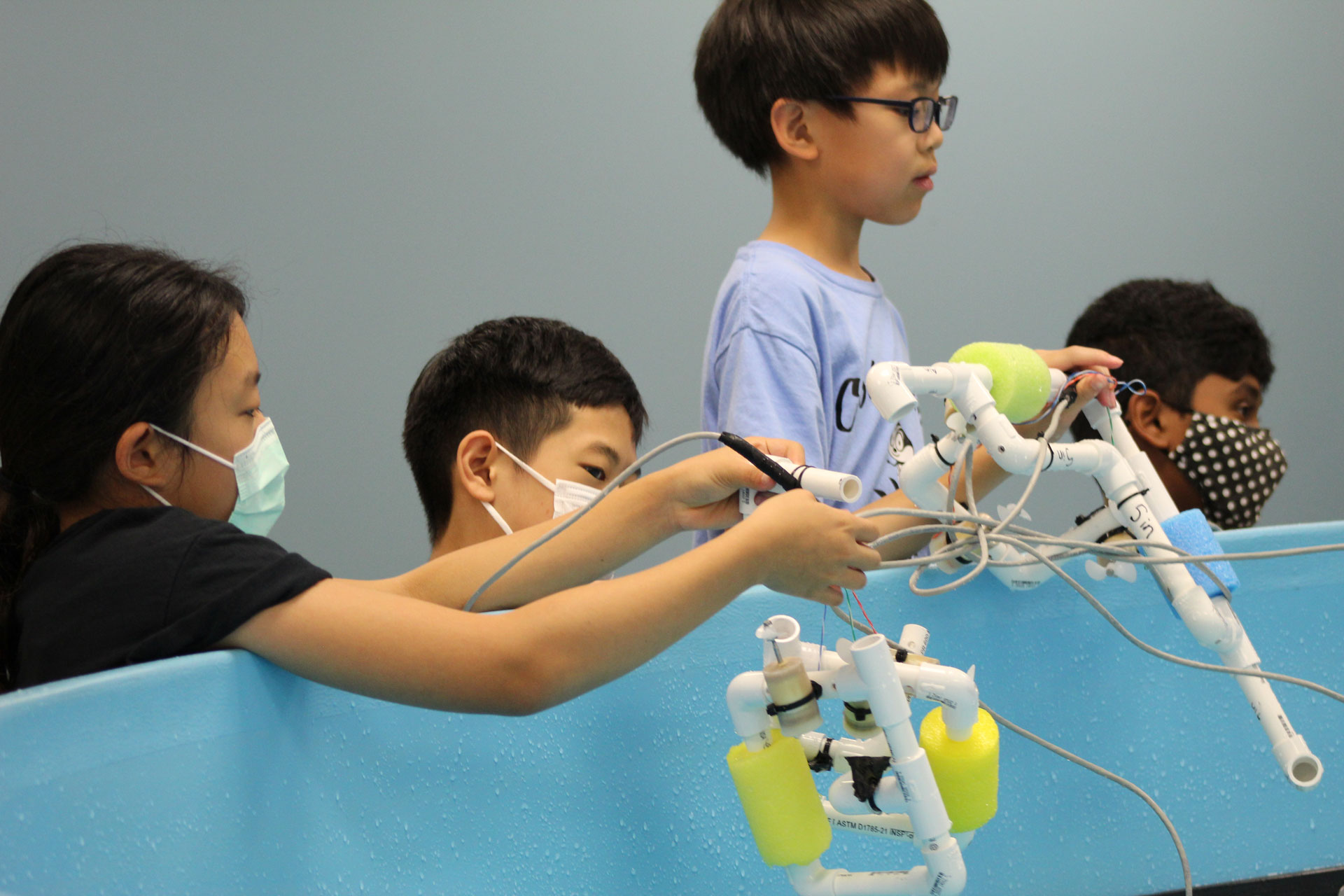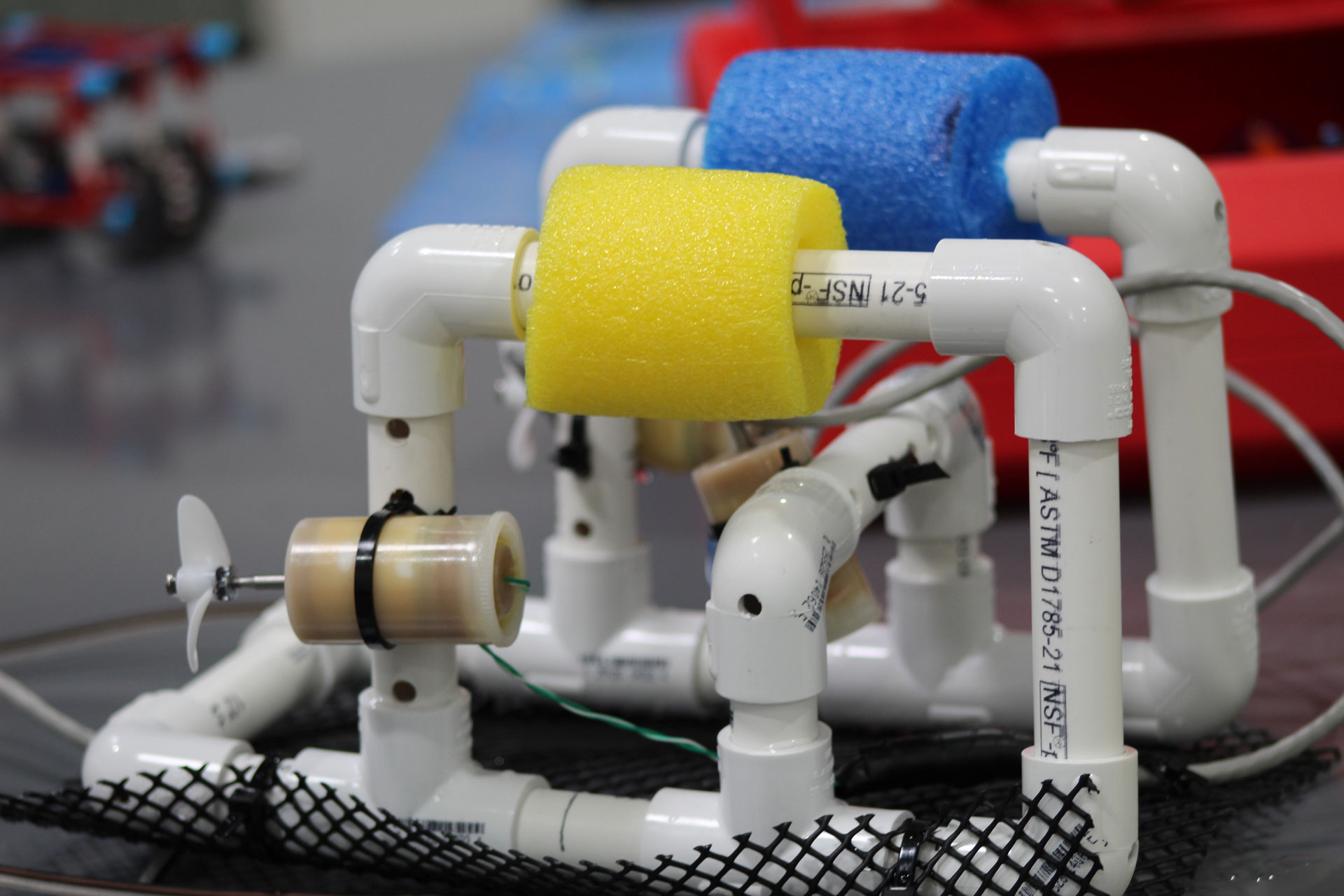In This Story
Middle and high school students rolled up their sleeves and got their hands wet at George Mason University’s first SeaPerch and SeaGlide summer camps. Leigh McCue-Weil, associate professor in the Department of Mechanical Engineering, hosted the camp, with support from graduate assistant Vanessa Barth, and lab technician and shop manager Johnnie Hall. For the first two weeks in August, students built and tested these maritime robotic vehicles at the Innovative Drive shop and lab facilities located near Mason’s SciTech campus.
Vanessa Barth, a PhD student studying mechanical engineering, helped McCue manage the camp activities. Barth works in McCue’s lab at the Potomac Science Center on fundamental research in maritime robotics, supported by the NSF grant. Barth said the students learned how to build SeaPerch remotely operated vehicles (ROVs) using polyvinyl chloride (PVC) pipes, cut and drilled to form the vehicle, with a control box that the students soldered and assembled. Then the students placed them in large and small water tanks. For SeaPerch, campers used remote controls that resemble video game controllers that connect to the ROVs through a long cable. Students learned about buoyancy by trying to keep their devices afloat on the surface of the water tanks.
“I do not think they really struggled with understanding. They got better by watching and doing,” Barth said about the students grasping the concepts of the projects they built. “At the end of each day, it was really cool to see that they accomplished something.”
McCue said she started the camps so that robotics and engineering are accessible to students and so they gain self-confidence. She said the students get to use power tools for the first time and become excited about learning robotics. “The SeaPerch kit is really well designed for the middle school age group; and similarly, the SeaGlide, which is an untethered underwater glider, is a great challenge for the high schoolers.”
The camp is supported by the National Science Foundation (NSF) grant, “BRITE Relaunch: Persistent and Accessible Maritime Monitoring (PAMM)" which supports STEM outreach activities in maritime robotics. For the NSF-funded project holistically, McCue said “We’re trying to build platforms that help people conduct fundamental science.” She said ROVs can be used for data collection, research, and environmental monitoring.
Within the camp, McCue said the students have been learning and working hard and it delights her to see the students’ faces light up when they complete the project. She gave thanks to both NSF support and support from multiple offices within the College of Engineering and Computing, which offered free camps for the students.
McCue said she hopes opportunities like these get students excited about STEM. “Engineering is really broad and there’s something for everyone.”










